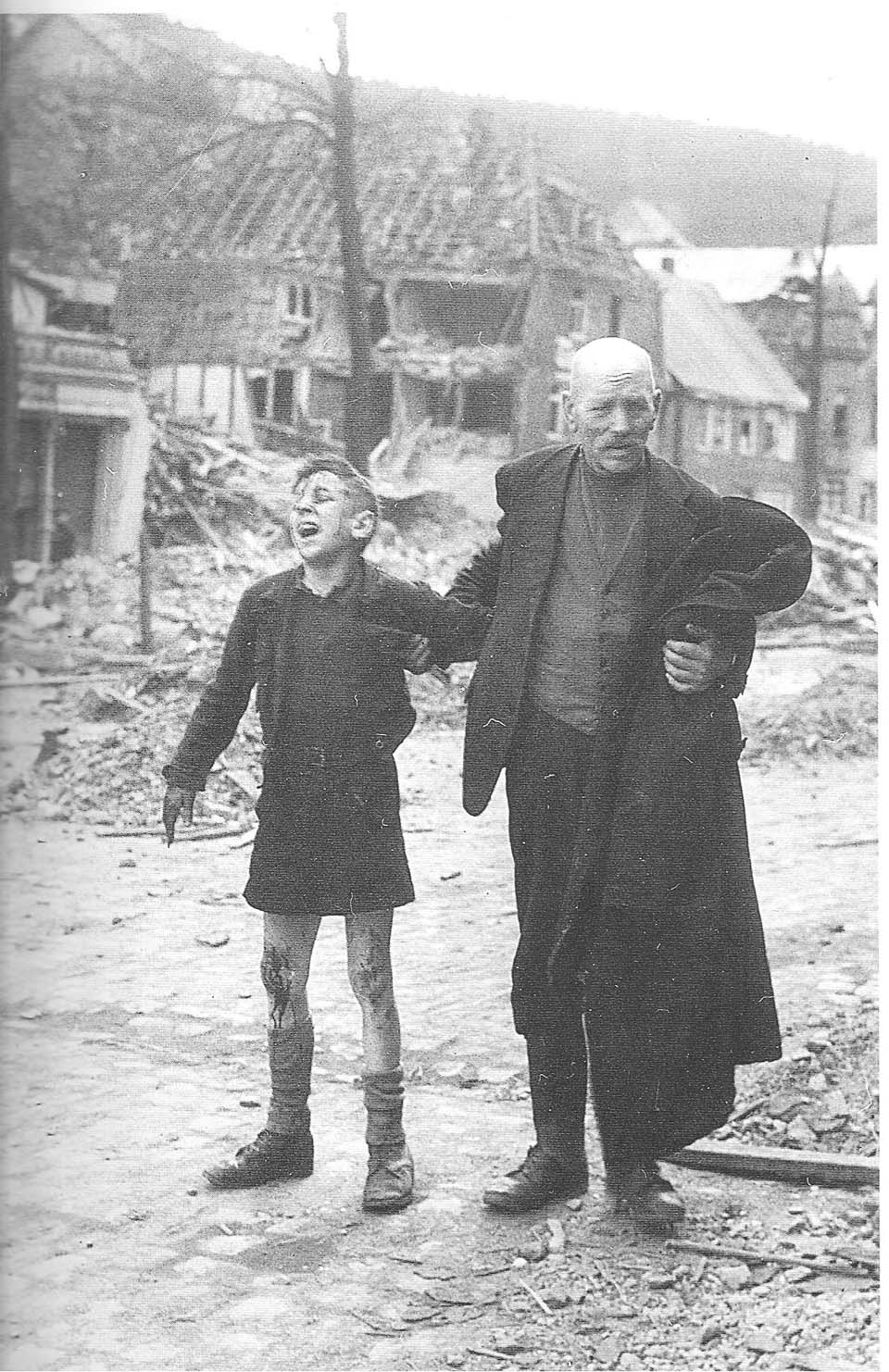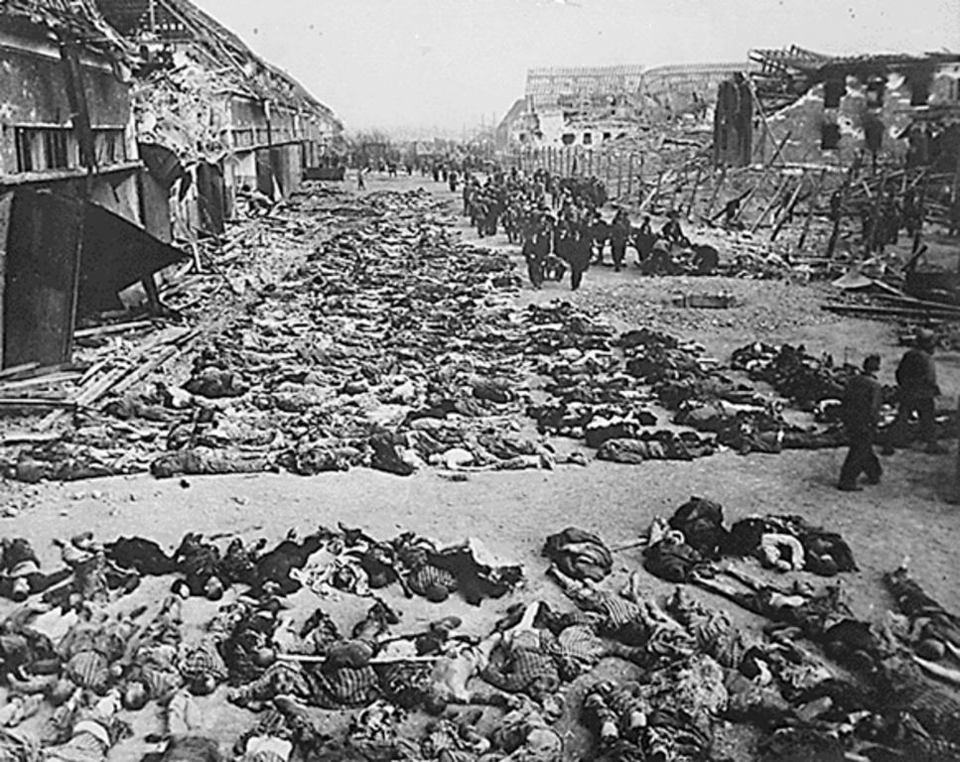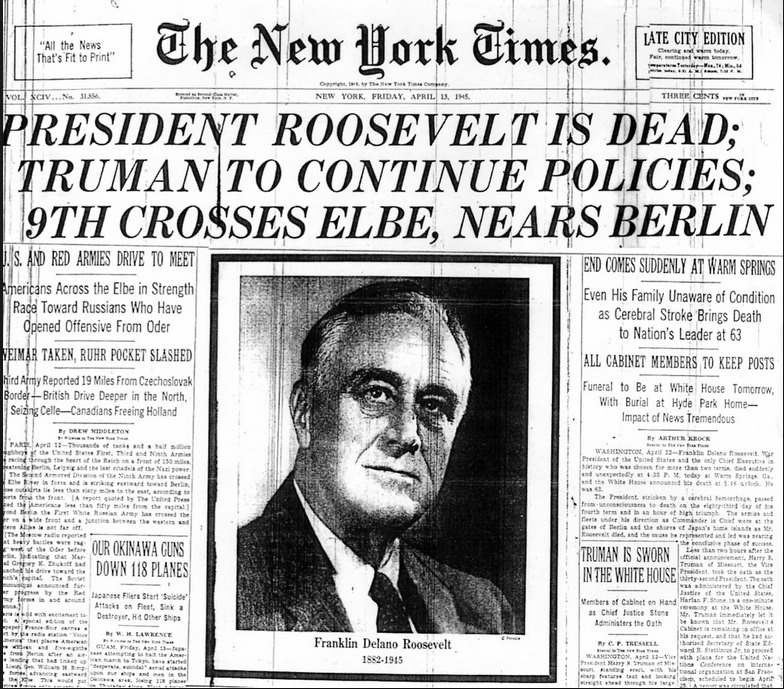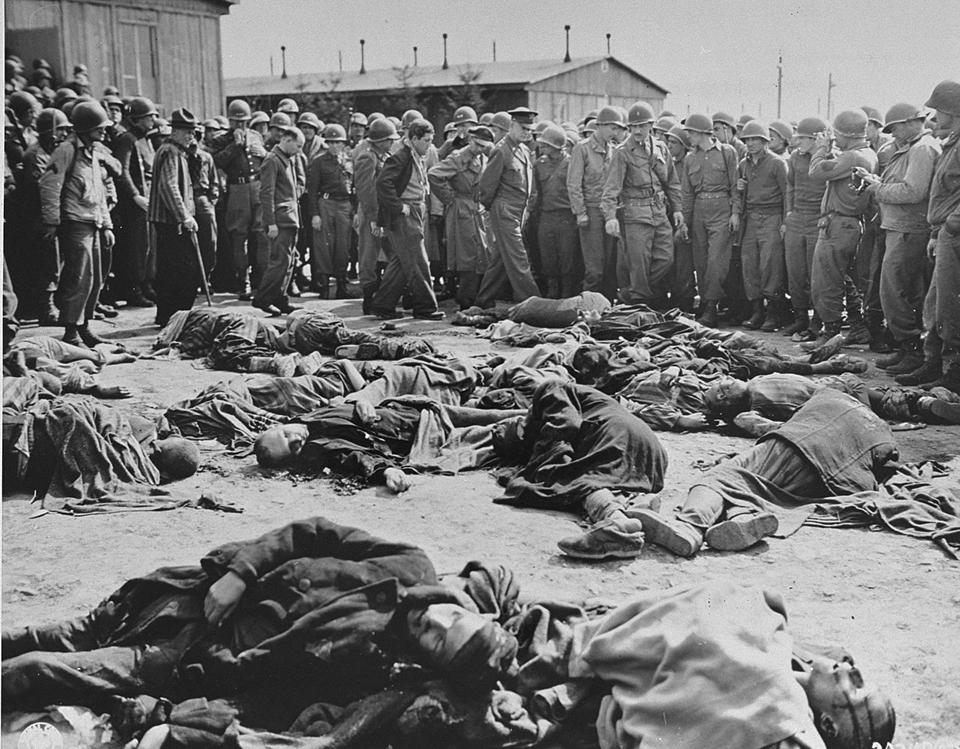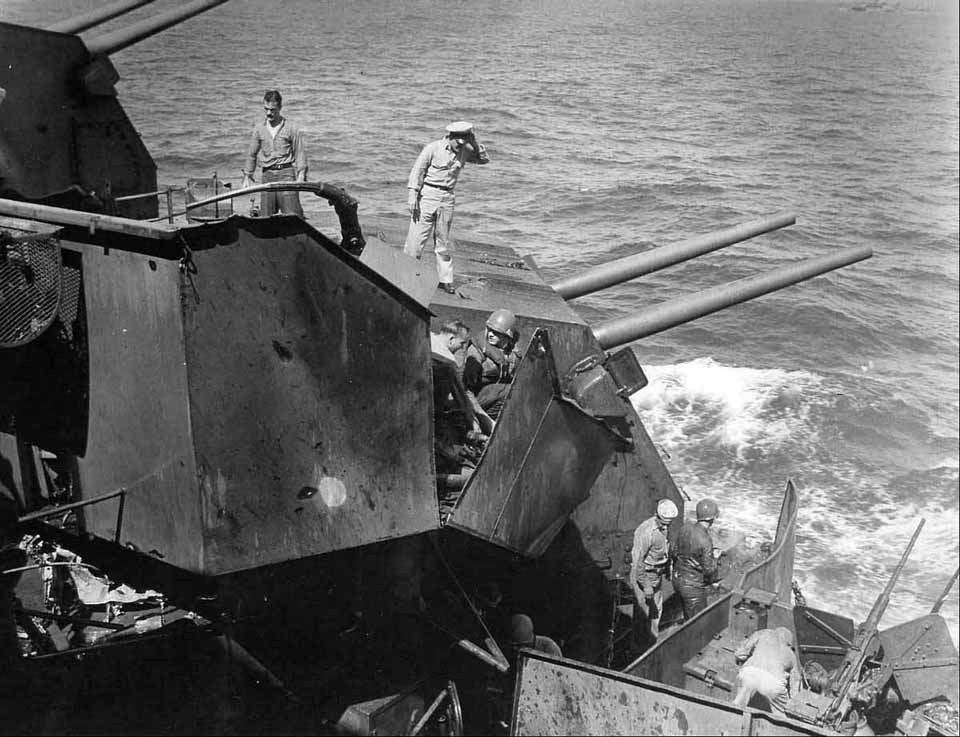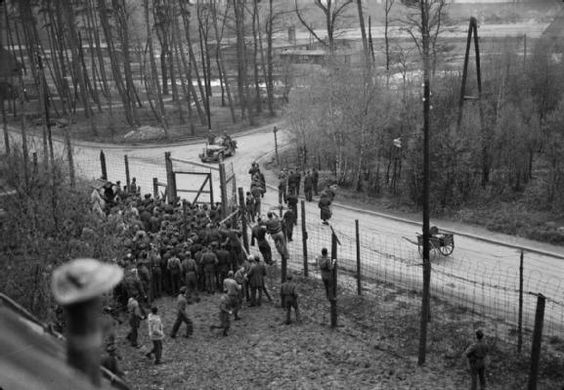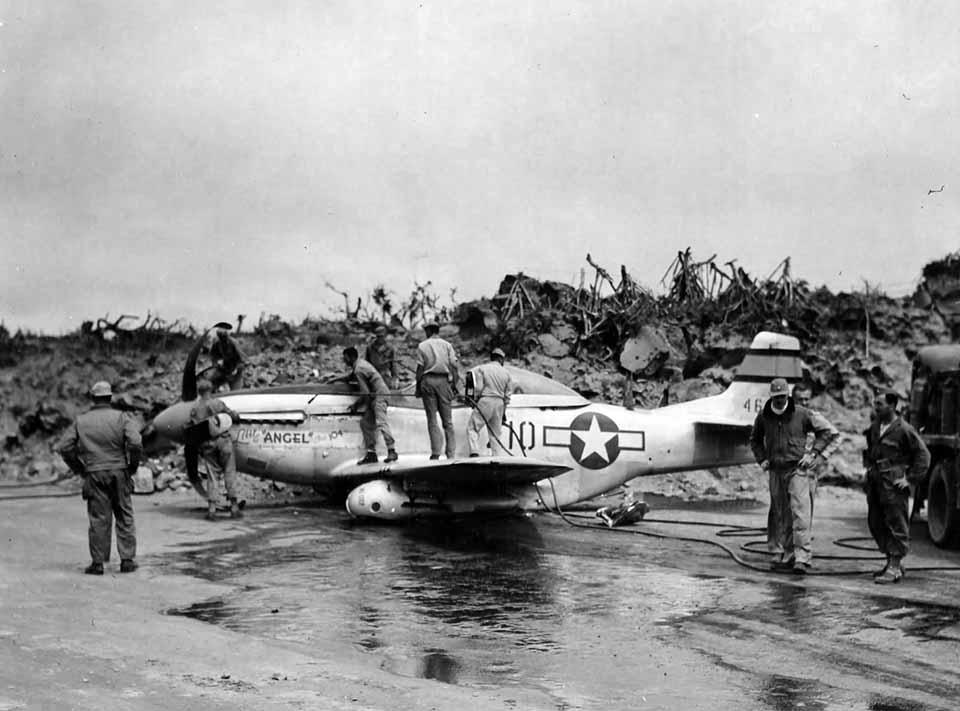Air Operations, CBI
BURMA- 75 10th Air Force fighter-bombers attack numerous targets across central Burma.
- 12 308th Heavy Bomb Group B-24s and 14 14th Air Force P-51s attack rail yards at Wuchang and the airfield there.
- 7 341st Medium Bomb Group B-25s attack rail yards at Hsuchang.
- Other B-25s mount light attacks against at least 5 other locations.
- More than 100 14th Air Force fighter-bombers attack numerous targets across southern and eastern China and northern French Indochina.
Air Operations, Europe
RAF BOMBER COMMANDEvening Ops:
Minor Ops:
- 97 Mosquitos are sent to Berlin and 3 to Munich, and there are 13 Mosquitos on Intruder patrols.
- There are no losses.
GERMANY:
- Although more than 275 9th Air Division bombers abort due to bad weather, 167 bombers are able to attack an ordnance depot, a rail bridge, a marshalling yard, and several targets of opportunity.
- 11 36th Fighter Group P-47s destroy 14 He-111s and 3 Do-217s at Schkeuditz Airdrome, and then discover more than 300 Luftwaffe aircraft on the ground at Leipzig/Mockau Airdrome. In the course of continuous strafing passes, the 11 P-47 pilots account for 16 Ju-88s, 9 FW-190s, 8 Bf-109s, 6 He-111s, 5 Me-410s, 10 asssorted trainers, 1 Me-262, 1 Ju-87, and a captured P-47.
ITALY:
- 12th Air Force B-25s attack the Brenner Pass rail line and support the British 8th Army.
- XXII TAC P-47s attack rail lines, communications targets, and dumps in the Po River valley.
- 12th Air Force B-25s attack a bridge at Maribor.
AUSTRIA:
- 124 15th Air Force P-38s bomb rail bridges at two locations.
- Although 128 B-24s abort because of bad weather, more than 400 15th Air Force B-17s and B-24s complete attacks on lines of communication on both sides of the Austro-Italy border and rail bridges at Padua.
Air Operations, Formosa
Commencing at dawn, 48 Royal Navy carrier bombers and 41 carrier fighters from Task Force 57 attack airfields in two waves, but afternoon strikes run into bad weather and are diverted against a chemical plant, shipping, and port facilities at Kiirun. V Bomber Command B-24s attack the airfields at Tainan and Okayama.
[Air Operations, Japan
- 136 313th and 314th Very Heavy Bomb wing B-29s attack two chemical plants at Koriyama with 446 tons of bombs.
- 94 73rd Very Heavy Bomb Wing B-29s attack an aircraft plant in Tokyo with 490 tons of bombs.
- 32 B-29s attack various targets of opportunity.
- 11 B-29s attack an engine factory (secondary target) at Shizuoka.
- 2 B-29s are lost.
- During an attack by 29th Very Heavy Bomb Group B-29s against Koriyama, a phosphorous smoke bomb explodes in one bomber’s launching chute and is shot into the airplane’s fuselage. SSgt Henry E. Erwin carries the burning bomb to a hatch and ejects it into the air, for which he is awarded a Medal of Honor.
- The 314th Very Heavy Bomb Wing’s 39th and 330th Very Heavy Bomb Groups make their combat debuts in an attack on a chemical plant at Koriyama. 15th and 21st Fighter group P-51 pilots down 15 Japanese fighters over the Tokyo area between 1130 and 1230 hours.
- During the night, 5 313th Very Heavy Bomb Wing B-29s sow mines in the Shimonoseki Strait.
Air Operations, Philippines
- XIII Bomber Command B-24s attack the Davao Bay, Kabacan, and Sapakan areas.
- 24 494th Heavy Bomb Group B-24s attack Kabacan.
- 42nd Medium Bomb Group B-25s sweep highways and roads on Mindanao.
- V Bomber Command B-24s, B-25s, A-20s, and V Fighter Command fighter-bombers attack numerous targets on Luzon.
- V Bomber Command A-20s and XIII Fighter Command P-38s support US 8th Army ground forces on Cebu.
- XIII Fighter Command P-38s at attack Cotabato and Kabacan.
Air Operations, Ryukyus
- Japanese aircraft based on Kyushu mount light attacks against aircraft parked at Okinawa's Kadena airfield about 0400 hours. Also, Japanese artillery mount a light barrage against Yontan field, where 5 F4Us are slightly damaged.
- Heavy Japanese air attacks are shifted from Task Force 58 against US destroyers on radar picket duty and several US battleships off Okinawa. 17 of an estimated 185 kamikaze aircraft get through the US Navy and Marine Corps fighter umbrella to sink 2 picket destroyers and damage several other US warships. During the afternoon, a US picket destroyer already damaged by a kamikaze is sunk by the first G4M 'Betty' bomber-launched MXY7 'Oka' manned rocket-propelled suicide bomb known to have been successfully expended in combat.
- US carrier-based F6Fs, F4Us, and FMs down 144 Japanese aircraft between 0010 and 2335 hours. Also, in their service’s best day of the war, US Marine Corps land- and carrier-based F4Us down 77 Japanese aircraft from Okinawa northward between 0535 and 1915 hours.
- US Marine Corps land-based F4Us conduct their first ground-support operations of the Okinawa campaign—two missions totaling 36 effective fighter-bomber sorties against Japanese artillery positions.
Atlantic
The US tank landing ship LST-493 sinks after running aground off Plymouth, England.
[Battle of the Atlantic
U-486 surfaces near the island of Hellisøy. Her noisy diesels are picked up by the British submarine Tapir which launches a torpedo attack sinking the U-boat.
| Class | Type VIIC |
| CO | Oberleutnant zur See Gerhard Meyer |
| Location | Norwegian waters, NW of Bergen |
| Cause | Submarine attack |
| Casualties | 48 |
| Survivors | None |
Burma
The IV Corps advance is beginning to make progress in the Sittang Valley. There is fighting at Pyaubwe and Yamethin. To the west of Meiktila 7th Indian Div from XXXIII Corps takes Kyaukpadaung, an important communications center between Chauk and Meiktila.
[Diplomatic Relations
(when?)Spain breaks off diplomatic relations with Japan.
[Eastern Front
With support from Rodion Malinovsky's 2nd Ukraine Front, the 3rd Ukraine Front is overcoming the defenders of Vienna. The Russians advance on Graz and reach the Vienna-Lundenburg road. The battle still continues at Breslau.
The Russians carry out heavy air raids on the Hela peninsula. The German communiqué admits the capitulation of Königsberg and announces the death sentence on the garrison commander, Gen Otto Lasch.
In Yugoslavia, the Germans are force to evacuate Zenica. The Yugoslavs and Bulgarians make a deep penetration south of the Drava.
CENTRAL SECTORThe 3rd Belorussian Front unleashes a massive attack against Group Samland. 2 divisions on the German left wing comu under intense pressure but hold on.
SOUTHERN SECTORSoviet forces in Austria begin to advance south of Vienna, the 26th, 27th and 57th Armies pushing forward on a broad front. Inside the city the Germans are fighting around Florisdorf Bridge, the defenders having just 6 panzers left. Strong Soviet attacks quickly destroy 4 tanks but the SS continue to hold.
[Italy
The US 5th Army has to postpone the offensive planned for this date by 24 hours on account of bad weather.
The advance of the units of the V Corps, British 8th Army, toward Bastia, on the north bank of the Reno River, continues. 8th Army has 3 separate bridgeheads over the Santerno.
[Okinawa
Fighting continues on the Motobu Peninsula and in the Kakazu sector of the Shuri Line but the US forces make little ground in these areas. There are a series of unsuccessful attempts by the Americans to take Kakazu Ridge. In the evening, after a heavy barrage, the Japanese begin a series of counterattacks, mainly in the sector held by the US 96th Div. The American lines hold, but some enemy elements manage to infiltrate through them.
For the second day running, the Japanese air force launches an attack in force on American shipping, using suicide aircraft, piloted flying bombs (Baka?) and high-level bombers. They sink the destroyer Mannert L. Abele (DD-733) and damage the battleships Idaho (BB-42) and Tennessee (BB-43). Also damaged in the attacks are the destroyers Stanly (DD-478), Purdy (DD-734), Zellars (DD-777), and Cassin Young (DD-793), the destroyer escorts Riddle (DE-185), Rall (DE-304), Walter C. Wann (DE-412) and Whitehurst (DE-634), light minelayer Lindsey (DM-32), the high-speed minesweeper Jeffers (DMS-27), and the minesweeper Gladiator (AM-319). The battleship New Mexico (BB-40) is damaged accidentally by friendly naval gunfire. The gasoline tanker Wabash (AOG-4) and the attack cargo ship Wyandot (AKA-92) are damaged in a collision. The landing craft LST-555 is damaged by grounding.
[Pacific
- US Pacific Fleet aircraft carry out three days of attacks over Kyushu, southern Japan. The main targets are air bases at Kikai, Tanega, Kanoya and Kushira. A total of 246 Japanese aircraft are either destroyed or damaged in the raids.
- The US submarine Silversides (SS-236) sinkd the Japanese auxiliary submarine chaser Shiratori Maru east of Tanega Jima.
- The British submarine Stygian sinks the Japanese auxiliary minesweeper WA-104 and damages the auxiliary submarine chasers CHA-104 and CHA-114 off the north coast of Bali.
- Mines sink the Japanese submarine RO-64 off Kobe, Japan and merchant cargo ship Minatogawa Maru off Wakamatsu.
Philippines
On Luzon the advance of the US 37th Div, I Corps, on Baguio is held up a little way from Monglo by fire from Japanese dug in on the surrounding hills. Troops of the XIV Corps advance into the Bicol peninsula.
There is fierce fighting on Babay Ridge, Cebu, part of which is captured by the Americal Div.
[United States, Politics
Pres Roosevelt dies of a cerebral hemorrhage at Warm Springs in Ga. Vice-Pres Harry S Truman becomes Pres. Truman has so far had little involvement in the work of Roosevelt's administration (he was a surprising choice as running mate in 1944) and among the subjects on which he receives his first briefing in the next few days is the atomic weapons project.
Roosevelt has been a president of whom strong opinions have been held. Most of the American people have valued his undoubted qualities of leadership both in bringing the United States out of the troubles of the Depression and in leading his country into war against the Axis dictatorships. A considerable number of Americans have held equally forceful opinions opposed to Roosevelt's ideas and methods. In the other Allied countries, especially Britain, Roosevelt has been almost universally liked and respected.
[Western Front
In the Canadian 1st Army sector, the I Corps sends in its divisions against Arnhem. The XIII Corps, US 9th Army, reaches the Elbe near Wittenberg and Werben. The XIX Corps succeeds in establishing a bridgehead over the Elbe in the area of Randau, south of Magdeburg.
The penetration by the XVIII Airborne Corps, US 1st Army, into the Ruhr pocket is well under way, and in the XX Corps, US 3rd Army, sector the divisions advance toward the Weisse and Elster Rivers. Patton's troops take Erfurt. The XII Corps pushes on toward the Hasslach River.
Units of the XV Corps, US 7th Army, are near Bamberg. After 9 days' fighting, Heilbronn is taken by the 10th Div of the VI Corps.
The French 1st Army reinforces its positions in the bridgehead over the Enz River after capturing the west bank of the river. French units take Baden Baden.
[Images from April 12, 1945
|
|
|
|
|
|
|
|
